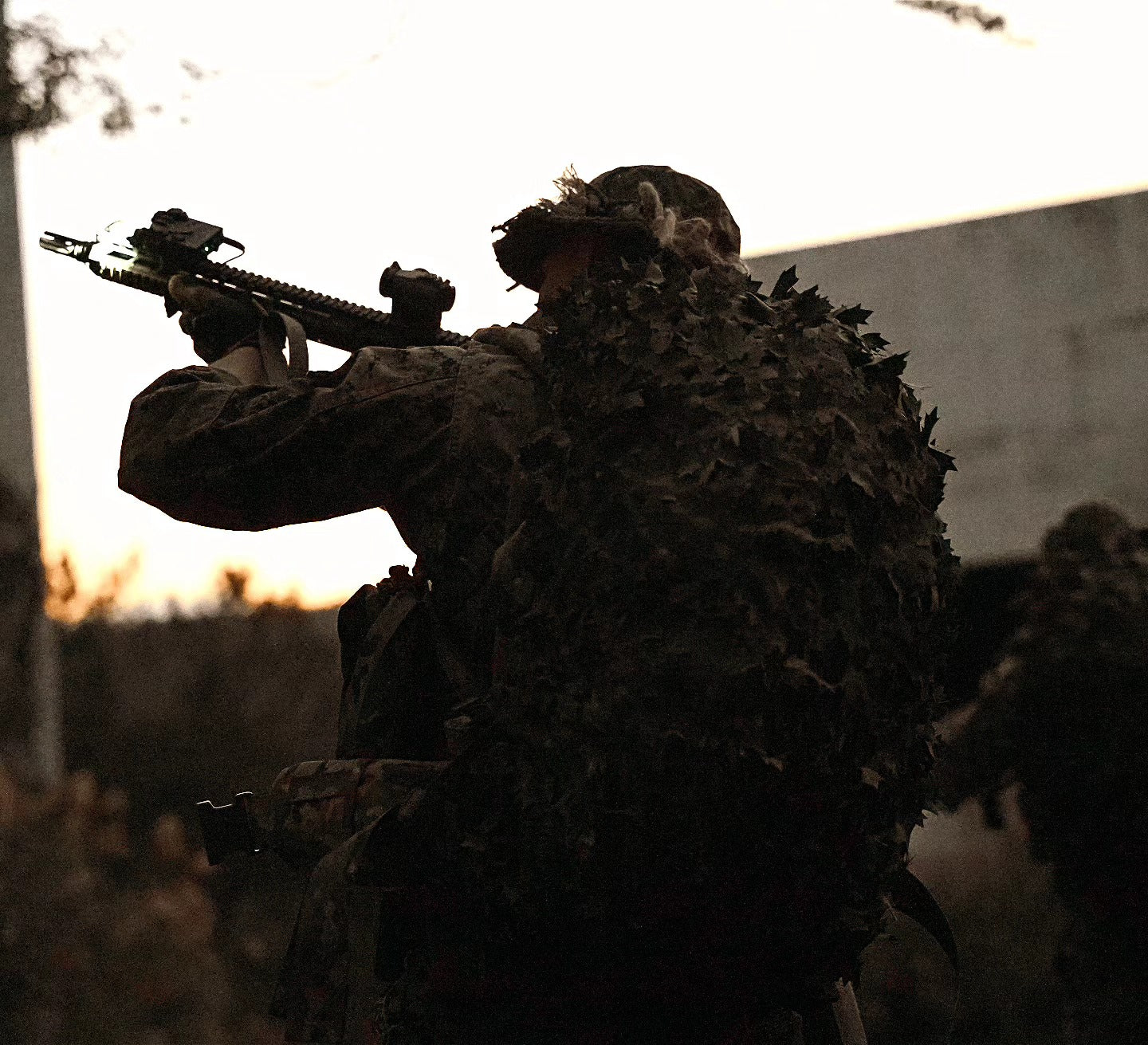Camouflaging Military Installations: Effective Strategies
As detection technologies become increasingly sophisticated with optical, infrared, and radar sensors, the camouflage of military installations is now a critical strategic concern.
Advanced technologies—ranging from smart materials to metamaterials—enable modern armies to conceal their infrastructure and equipment from enemy threats.
This blog explores the main camouflage strategies, their military applications, and their current limitations.
1. Adaptive Camouflage: Smart Polymers and Nanotechnologies
Modern camouflage goes far beyond traditional nets and painted patterns. Thanks to advances in materials science, surfaces capable of changing color and texture in real time are under development. These innovations rely on adaptive polymers and nanotechnology.
Electrochromic Polymers and Smart Surfaces
Electrochromic polymers allow the instant transformation of a vehicle or soldier’s appearance. Inspired by chameleon skin, these materials respond to an electric field and adjust their color or pattern to blend into the environment.
Nanotechnology and Stealth Coatings
Nanomaterials make it possible to design coatings that alter light reflectance, making objects less visible in the optical spectrum. These coatings are already used on certain stealth aircraft to reduce radar signatures.
Current Limitations
-
High production and maintenance costs
-
Limited resistance to extreme weather conditions
-
Still experimental for some applications
2. Advanced Optical Camouflage: The Science Behind Invisibility
One of the most ambitious goals in military camouflage research is manipulating light to render an object invisible to the human eye. This involves the use of metamaterials and transformation lenses.
Metamaterials and Light Manipulation
Metamaterials are artificial structures capable of bending light around an object, preventing direct observation. This technology is based on the principle of negative refraction and is being tested for military applications.
Transformation Lenses: Challenging Classical Optics
Transformation lenses use complex structures to deflect light rays. They can obscure an object by projecting the image of its background behind it, creating the illusion of invisibility.
Limitations and Challenges
-
Current metamaterials work only within specific wavelengths
-
Invisibility depends on viewing angle, making concealment imperfect
-
Absorption and re-emission of light remain technical challenges
3. Thermal and Infrared Invisibility: Evading Modern Sensors
Infrared detection systems are widely used to locate military infrastructure, vehicles, and even camouflaged soldiers. Several techniques have been developed to counter this threat.
Thermally-Regulated Coatings
Phase-change materials absorb and dissipate heat in a controlled way, making an object less visible to infrared cameras. These coatings are used on tanks and military vehicles.
Thermal Decoys
Inspired by aircraft countermeasures against heat-seeking missiles, thermal decoys create false infrared signatures to mislead enemy sensors.
Suppressing Heat Emissions
Some military installations are designed to limit thermal dissipation using high-performance insulation and specialized ventilation systems.
Limitations
-
High development and maintenance costs
-
Limited lifespan of thermally-regulated materials
-
Continuous adaptation needed to counter new generations of sensors
4. Quantum Camouflage: Toward Full Multispectral Invisibility
Quantum camouflage is an emerging field that leverages quantum effects to make an object invisible across multiple spectra simultaneously.
Effects and Signature Suppression
One idea under exploration is using quantum superposition to alter how light particles interact with an object, reducing its visibility.
Multispectral Camouflage
Unlike classical methods that target specific wavelengths, quantum camouflage could theoretically work across optical, infrared, radar, and even radio spectrums.
Technological Challenges
-
Large-scale quantum physics remains difficult to master
-
Systems would require advanced, currently unavailable technologies
-
Military applications are still hypothetical and may take decades to materialize
5. Strategic and Ethical Implications of Advanced Camouflage Technologies
Military invisibility doesn’t just present technical challenges—it also raises strategic and ethical questions.
Operational Advantages
-
Enhanced concealment of military bases
-
Increased effectiveness in reconnaissance and infiltration operations
-
Reduced vulnerability of armed forces to enemy strikes
Risks of Military Escalation
If one army achieves near-invisibility, others may be pushed to develop even more advanced detection systems, potentially sparking a new arms race.
Legal and Ethical Frameworks
International conventions could be undermined if invisibility prevents distinguishing between combatants and civilians.
These technologies raise concerns about transparency and democratic oversight of military actions.
Conclusion
The camouflage of military installations has greatly evolved thanks to advancements in smart materials, optics, and quantum physics. However, these technologies still face major technical and ethical challenges. As research continues, it is vital to strike a balance between innovation and military responsibility.
FAQ: Answers to Common Questions
What are the main types of advanced military camouflage?
The most advanced techniques include electrochromic polymers, metamaterials, thermoregulated coatings, and thermal decoys.
Do metamaterials allow for total invisibility?
No, they redirect light under specific conditions, but effectiveness depends on the viewing angle and light spectrum.
How does infrared invisibility work?
It uses materials that regulate and dissipate heat in a controlled manner to avoid detection by infrared sensors.
Is quantum camouflage real?
It is still a theoretical field, but some research shows promising avenues for future multispectral invisibility.
Are these technologies available to today’s armies?
Some, like thermoregulated coatings, are already in use, while others, like metamaterials, remain in experimental stages.
Best regards,
The Nutsof Team
Advanced Camouflage & Defense Solutions
🌐 www.nutsof.com
Follow us on Facebook and Instagram for the latest in advanced military camouflage technologies.


